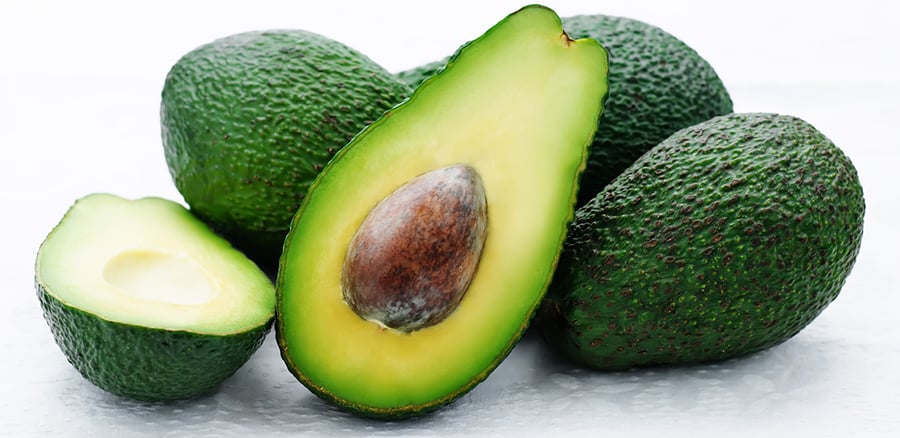1. Avocados

One avocado a day can lower LDL levels. They are rich in mono-unsaturated fats and high in fiber. Both lower LDL and raise HDL or good cholesterol. Using avocado oil can help lower LDL and triglycerides (blood fats) as well.
Use avocados in place of mayonnaise, on top of sandwiches, or on a leafy green salad. Turn them into smoothies or make avocado bread. Like zucchini, avocado can hide in everything and lower your cholesterol at the same time.
2. Legumes

Eating beans, peas, and lentils may help lower cholesterol. Use legumes in place of refined grains (white flour and white rice) and meats. The fiber, minerals and plant-based protein in legumes can help lower LDL.
Eat at least ½ a cup a day. Obviously, you don’t want to cook them in fat or mix the lard into refried beans. Don’t over-salt them, either since salt is hard on the heart. There are several dozen varieties of legumes out there, so try them all!
3. Fatty Fish

Fish like tuna, salmon and sardines have omega-3 fatty acids. Healthy fats increase your “good” cholesterol and lower chronic inflammation.
Studies show that eating fatty fish regularly may prevent the development of high blood pressure and low “good” cholesterol levels. It also lowers the risk of stroke by 27%.
Don’t fry fatty fish. It destroys the good and adds bad fats. If you can’t stand fish, eat nuts (within moderation), flaxseeds and cook with flaxseed oil and soybean oil.
4. Oats and Barley

Refined grains are bad for your cholesterol levels and waistline. Instead of eating white flour products, go for whole grains in bread, pasta and for breakfast. The research is extensive and conclusive. Three servings a day of whole grains lead to a 20% reduced risk of heart disease. The more whole grain servings you eat a day, the better.
A bowl of oatmeal, without the butter and maple syrup, may lower LDL cholesterol by 7%. Barley has much the same properties.
5. Garlic

Garlic has a long history of being healthy (and keeping away vampires!). Garlic lowers blood pressure and may lower LDL and triglycerides. Researchers suggest using aged garlic supplements. The recommended dose is one or two cloves of raw garlic (crush and swallow in water) or 300 mg of garlic tablets.
If you are taking blood thinner, talk to your doctor first. Garlic alone won’t lower your cholesterol as much as other foods but using it generously in your cooking will definitely help.
Thanks For Reading
Please Share the Positive post you like and don't forget to follow our blog and never miss updates about Health and Technology.
Hayrat Angaiz Dunya



